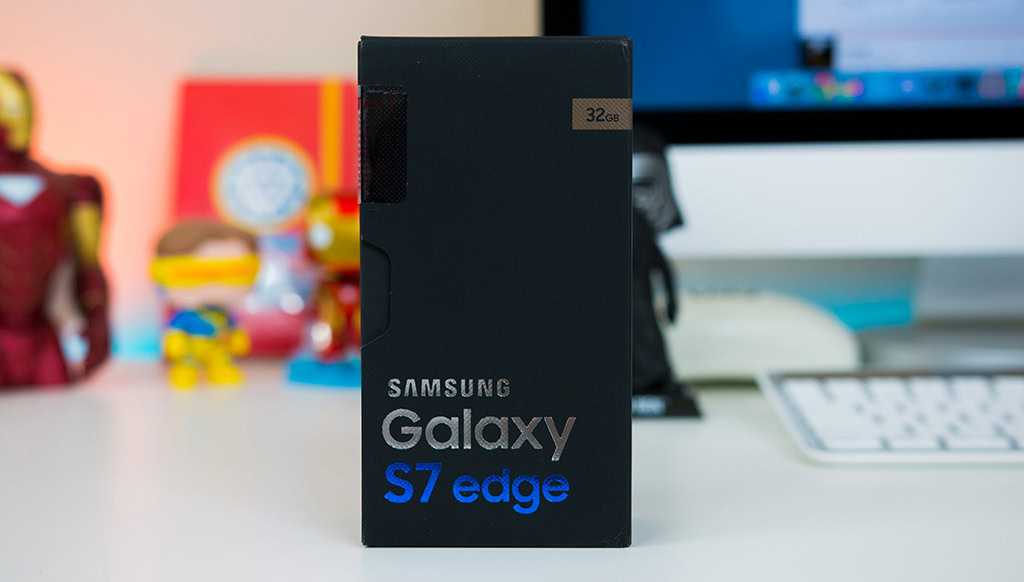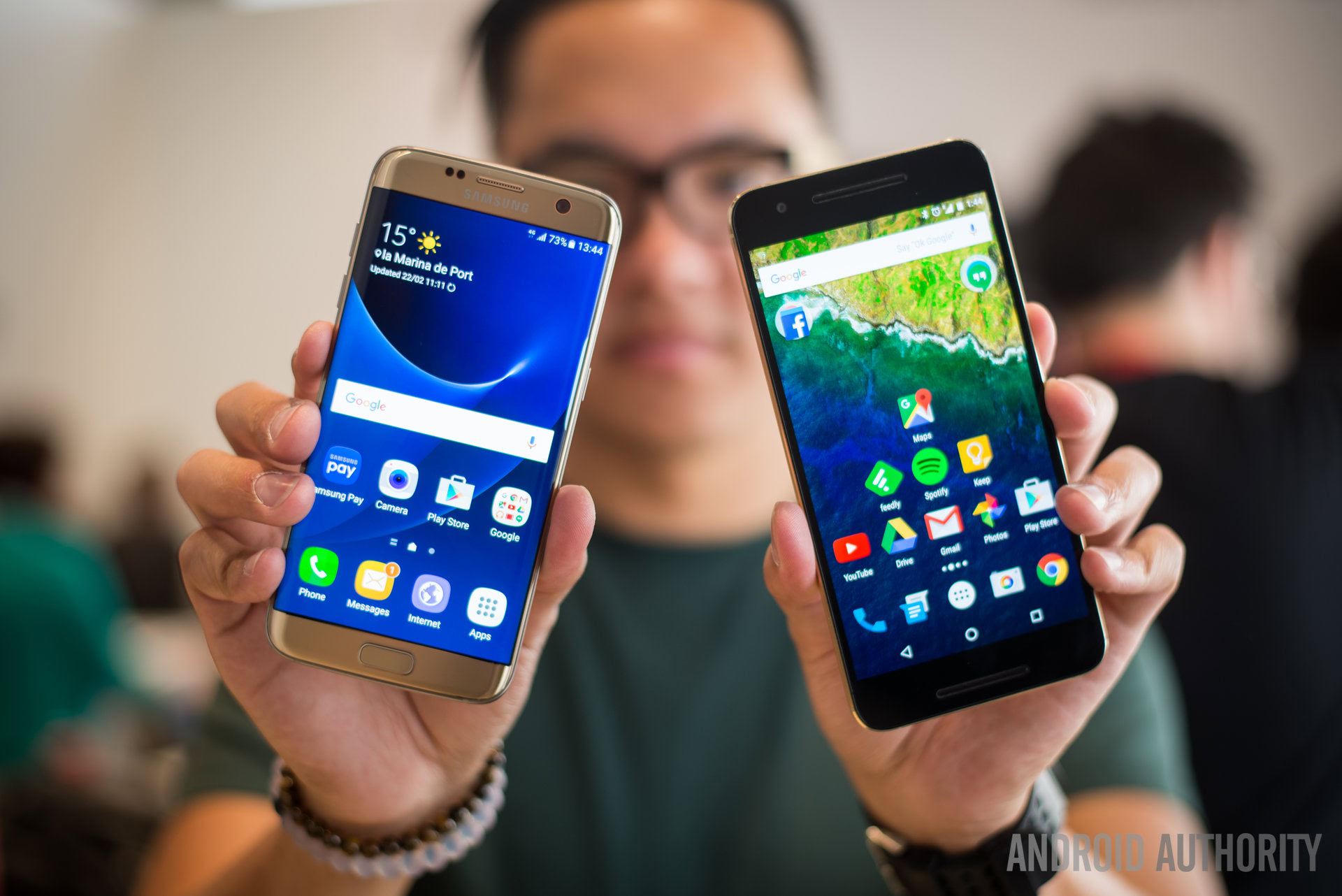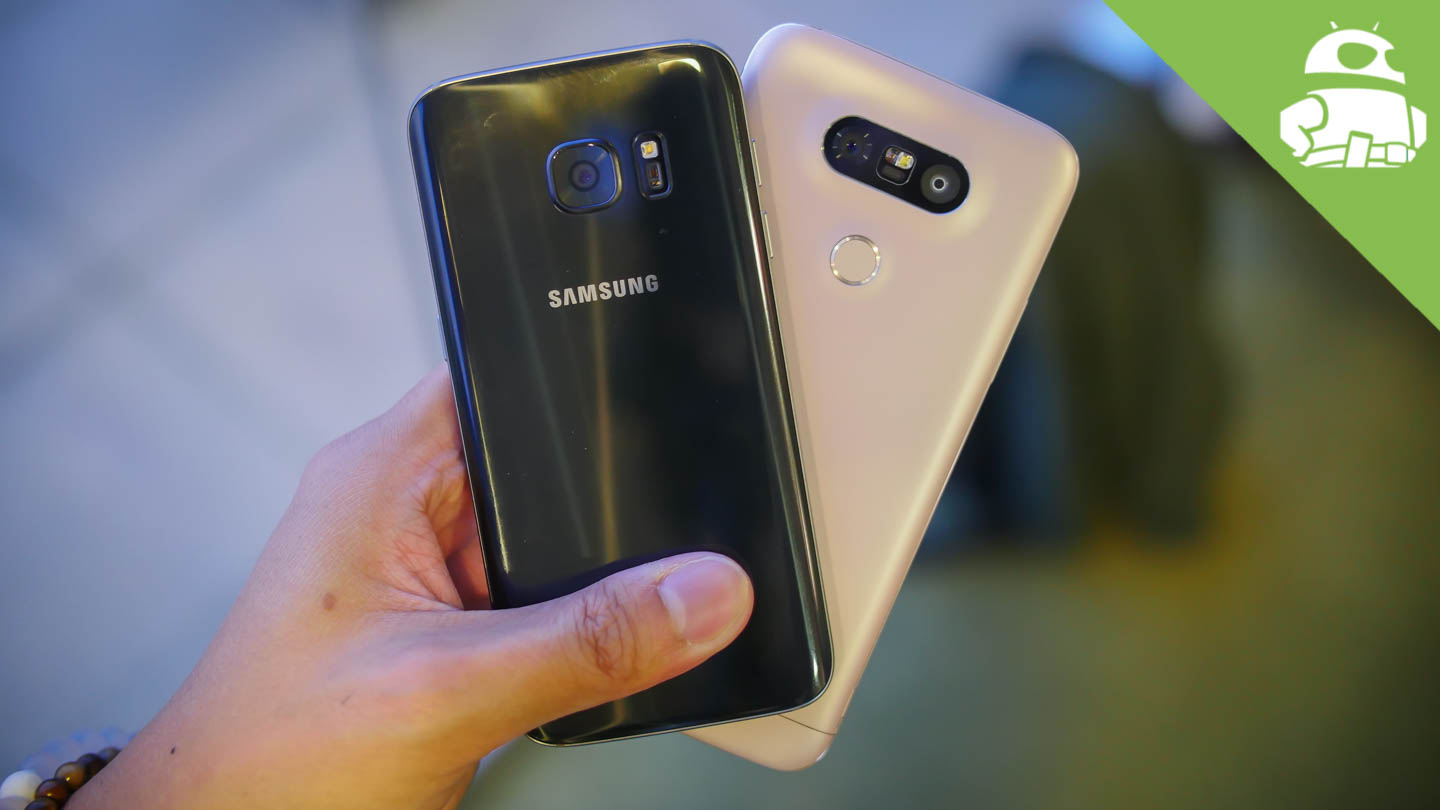Affiliate links on Android Authority may earn us a commission. Learn more.
Galaxy S7 Edge unboxing and first 48 hours

One of the highlights of last month’s Mobile World Congress was undoubtedly Samsung’s introduction of the new Galaxy S7 and Galaxy S7 Edge, and just a few weeks later, the new flagships are now starting to hit the shelves. With a few welcome improvements and refinements over last year’s handsets, there’s a lot to like but after 48 hours with the Galaxy S7 Edge, what do we think of Samsung’s latest offering? Let’s jump in and find out, shall we?
The first thing you’ll notice when you receive your new handset is the black box, which looks similar to previous boxes and has the name of the phone you’ve ordered embossed on the front. Inside the box, you’ll find the standard contents you’d expect, including a microUSB cable, wall charger and Samsung’s new headphones, while on the back, Samsung has listed the key specs of the phone.
see also:Galaxy S7 edge cases
- Display: 5.5-inch dual curved Quad HD Super AMOLED display
- CPU: Quad-core Snapdragon 820 (US/China) or octa-core Exynos 8890 (EU/Asia)
- Memory: 4GB RAM, 32GB/64GB ROM and microSD expansion (up to 200GB)
- Camera: 12MP, f/1.7 aperture, phase detection auto-focus, OIS, 1.4µm pixel size
- Battery: 3600mAh non-removable battery, Quick Charge 2.0 (60% in 30 mins)
- Software: Android 6.0 Marshmallow, TouchWiz UX, Always on display, Edge UX
That’s the specs on paper but what about the actual phone in person? While Samsung’s dual curved design certainly isn’t new, the company has made considerable strides in the past year towards perfecting the experience. Rather than redesign the handset – like it did from the Galaxy S5 to the Galaxy S6 – the Korean OEM has refined the experience and added a few changes to make the Galaxy S7 Edge even better than its predecessors.
One of the biggest complaints with the Galaxy S6 and Galaxy S6 Edge was the sharp in-hand feel and Samsung has sought to fix this by including a curved back, which first debuted with the Galaxy Note 5. The tapered edges at the side of the back panel are certainly not a game changer but do make the handset more ergonomically friendly and complement the design of the Galaxy S7 Edge rather well. Like last year, the glass backing is definitely a huge fingerprint magnet, which is somewhat disappointing but a small price to pay for the overall look and feel, which is absolutely amazing.
[related_videos align=”center” type=”custom” videos=”676937,675238,675004″]
The improved in-hand experience is definitely welcome as the Galaxy S7 Edge combines both the Galaxy S6 Edge and Galaxy S6 Edge+ into a smartphone that’s the perfect size. I personally like the increased screen real estate, but despite the bigger screen, the Galaxy S7 Edge is still relatively thin and extremely comfortable to hold in the hand.
The screen resolution hasn’t changed from the Quad HD panel used in the Galaxy S6 Edge last year and everything still looks super sharp and crisp. Everything from web browsing, videos, music and games have all looked absolutely fantastic, and the display in general has been a total pleasure to use.
It’s safe to say that Samsung makes some of the best smartphone displays on the market and this beautifully curved AMOLED display is certainly quite the looker.
The Galaxy S7 Edge shows that Samsung has been able to refine the experience of last year’s flagships by listening to consumer feedback and bringing back some features that were missing from last year’s handsets. One of these is the microSD card expansion, which allows you to expand the 32GB or 64GB internal storage by up to 200GB, and while Samsung isn’t offering a 128GB model, there’s definitely enough storage available for most users.
Another new feature is a big improvement over the Galaxy S6 line-up as Samsung has been able to re-introduce IP68 water and dust resistance that was left out of last year’s handsets. Unlike the Galaxy S5 – the last mainstream Galaxy flagship to sport rugged protection – however, it’s all sealed from the inside meaning there’s no annoying flaps that can get in the way or get broken. As you’ll see in the video, the Galaxy S7 Edge can survive the occasional spill, a dunk in the toilet or even being submerged for up to 1 metre for up to 30 minutes.
By far the most important improvement addresses one of the major concerns of last year’s flagships: the battery life. Last year, the Galaxy S6 Edge had a 2600mAh battery that almost always failed to last a whole day, while the Galaxy S6 Edge+ sported a 3000mAh battery, both of which were non-removable.
While Samsung has still kept the battery sealed and non-removable, the company has included an extremely large 3600mAh unit that is 38% larger than the Galaxy S6 Edge and in the first two days, we’ve had no problems lasting an entire day. In fact, on day one, we managed to achieve 5 hours’ screen on time, which is nothing short of incredible.
On paper, the camera seems to have taken a dip with a drop from 16MP last year to 12MP but in actual usage, things like the actual sensor and the image algorithms are far more important. Samsung has taken inspiration from the Nexus 6P and included less megapixels, but with larger pixels, which improves low light photos. Coupled with the f/1.7 aperture, Optical Image Stabilisation and extremely fast phase detection auto focus, there’s no denying that the Galaxy S7 Edge has a great camera for any lighting condition.

The performance of the Galaxy S7 Edge so far is about what you could expect from a Snapdragon 820 powered smartphone which, coupled with 4GB RAM, provides a fast and snappy experience. That being said, there is the occasional lag that’s typical of Samsung smartphones and while it’s not a deal-breaker by any means, it does lack the fluidity of stock Android.
On the software side, Samsung has certainly made a lot of improvements, not least to the Edge UX that takes advantage of the Edge’s curved front glass panel. In the video below, you can see all the new features that the Edge UX has to offer including the improvements on last year and the new features that have debuted this year.
While I’m not entirely sold on the usefulness of the Edge features, at the bare minimum, they are a great way of storing apps, contacts and other bits of useful information, which can all be accessed at the swipe of a finger without cluttering up your home screens.
New to the Galaxy S7 and Galaxy S7 Edge this year is the Always On display, which can show you useful information without draining the battery, as it takes advantage of the AMOLED display by only lighting up the individual pixels it needs. Right now, it’s very limited in functionality, which probably explains why it’s disabled by default and it can only show you the clock, calendar or a static image.
I do like the calendar and it’s the option I’ve used the most, but it would be nice to see Samsung expand upon this feature in a future software update to make it a lot more robust. Overall, there’s no denying that Samsung has definitely made some big improvements with the Galaxy S7 Edge, and while we’re reserving final judgement for the full review – which is going to be in-depth and should be out within a week or so – the Galaxy S7 Edge certainly has me impressed so far.

What do you think of the Galaxy S7 Edge and do you plan to buy one? Do you prefer the Galaxy S7 without the curved edges or even something like the LG G5? Let us know your views in the comments below guys and stay tuned for our full Galaxy S7 Edge review!